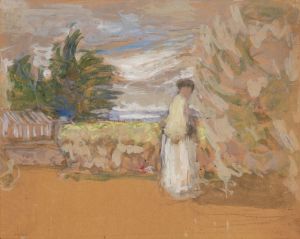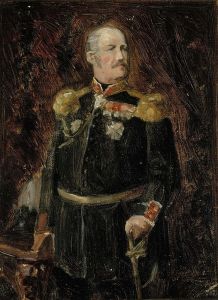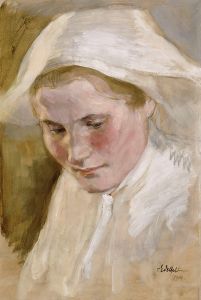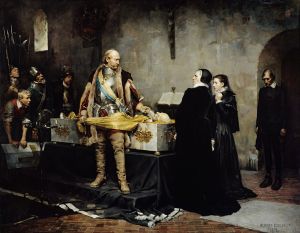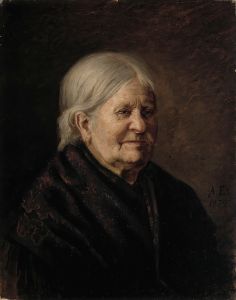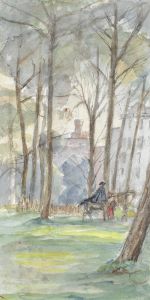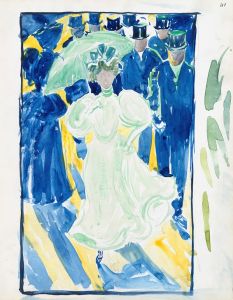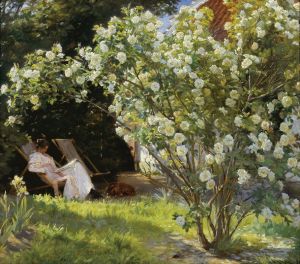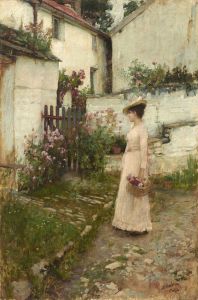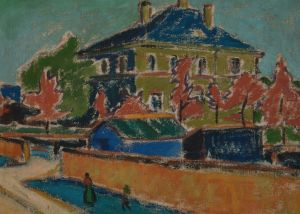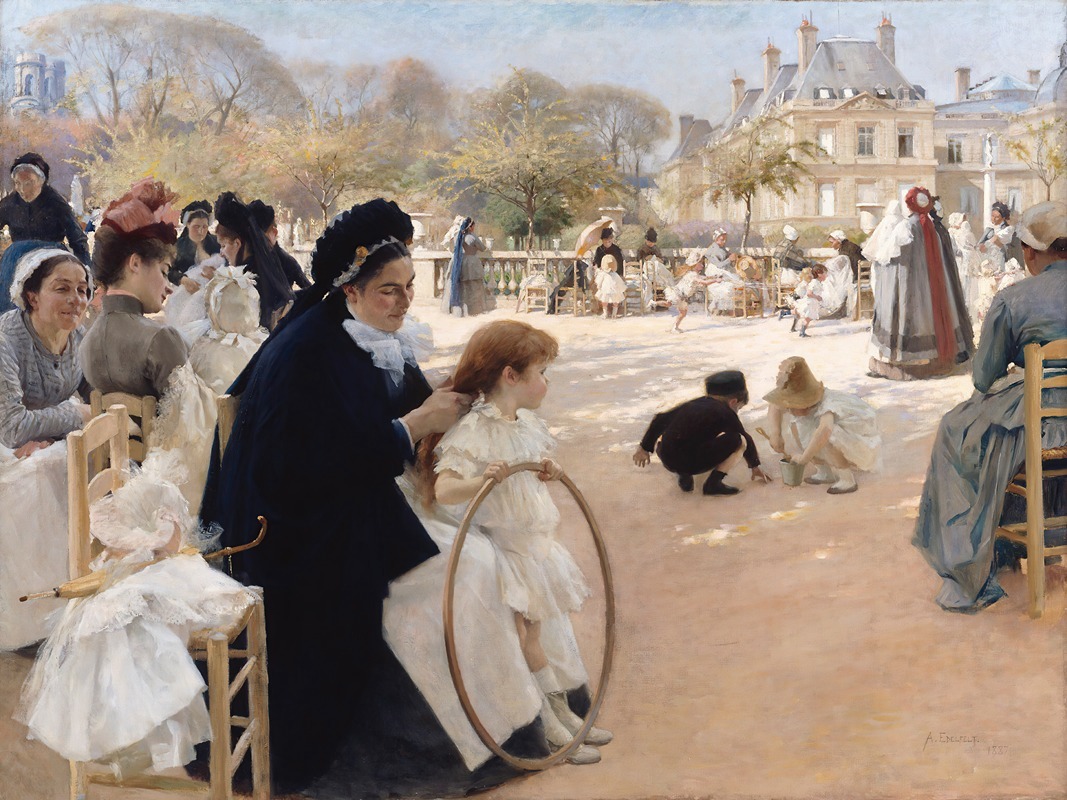
The Luxembourg Gardens, Paris, 1887
A hand-painted replica of Albert Edelfelt’s masterpiece The Luxembourg Gardens, Paris, 1887, meticulously crafted by professional artists to capture the true essence of the original. Each piece is created with museum-quality canvas and rare mineral pigments, carefully painted by experienced artists with delicate brushstrokes and rich, layered colors to perfectly recreate the texture of the original artwork. Unlike machine-printed reproductions, this hand-painted version brings the painting to life, infused with the artist’s emotions and skill in every stroke. Whether for personal collection or home decoration, it instantly elevates the artistic atmosphere of any space.
Albert Edelfelt's painting "The Luxembourg Gardens, Paris, 1887" is a notable work by the Finnish artist, who was one of the most prominent painters of his time. Edelfelt was known for his ability to capture the essence of his subjects with a keen eye for detail and a vibrant use of color. This particular painting is a testament to his skill in portraying everyday life with a sense of realism and charm.
The Luxembourg Gardens, located in the heart of Paris, have long been a source of inspiration for artists, writers, and the general public. Established in the early 17th century by Marie de' Medici, the widow of King Henry IV of France, the gardens are part of the Luxembourg Palace, which now houses the French Senate. The gardens are renowned for their meticulously maintained lawns, beautiful flowerbeds, and a variety of sculptures and fountains, making them a quintessential Parisian landmark.
In "The Luxembourg Gardens, Paris, 1887," Edelfelt captures a serene and picturesque scene within these famous gardens. The painting depicts a leisurely afternoon, with people strolling along the pathways, children playing, and individuals seated on benches enjoying the tranquil atmosphere. Edelfelt's use of light and shadow is particularly noteworthy, as he skillfully conveys the dappled sunlight filtering through the trees, creating a warm and inviting ambiance.
Edelfelt's attention to detail is evident in the way he portrays the figures in the painting. Each person is depicted with distinct features and attire, reflecting the fashion of the late 19th century. The artist's ability to capture the nuances of human interaction and the subtleties of everyday life is a hallmark of his work. This painting, like many of Edelfelt's other works, demonstrates his commitment to realism and his keen observation of the world around him.
The composition of the painting is carefully balanced, with the figures arranged in a way that guides the viewer's eye through the scene. The lush greenery of the gardens serves as a backdrop, enhancing the sense of peace and relaxation that the painting conveys. Edelfelt's use of color is both vibrant and harmonious, with a palette that reflects the natural beauty of the gardens.
Albert Edelfelt was a significant figure in the art world during his lifetime, and his works continue to be celebrated for their technical excellence and emotional depth. Born in 1854 in Porvoo, Finland, Edelfelt studied art in Helsinki, Antwerp, and Paris, where he became part of the vibrant artistic community. His time in Paris greatly influenced his style and subject matter, as seen in "The Luxembourg Gardens, Paris, 1887."
Throughout his career, Edelfelt received numerous accolades and was highly regarded by his contemporaries. His ability to capture the spirit of his subjects, whether in portraits, landscapes, or scenes of everyday life, earned him a lasting place in the history of art. "The Luxembourg Gardens, Paris, 1887" is a fine example of his work, showcasing his talent for bringing the beauty of the world to life on canvas.
Today, Edelfelt's paintings are held in high esteem and can be found in various museums and private collections around the world. His contribution to the art world, particularly in the context of Finnish and European art, remains significant, and his works continue to be studied and appreciated by art enthusiasts and scholars alike.





